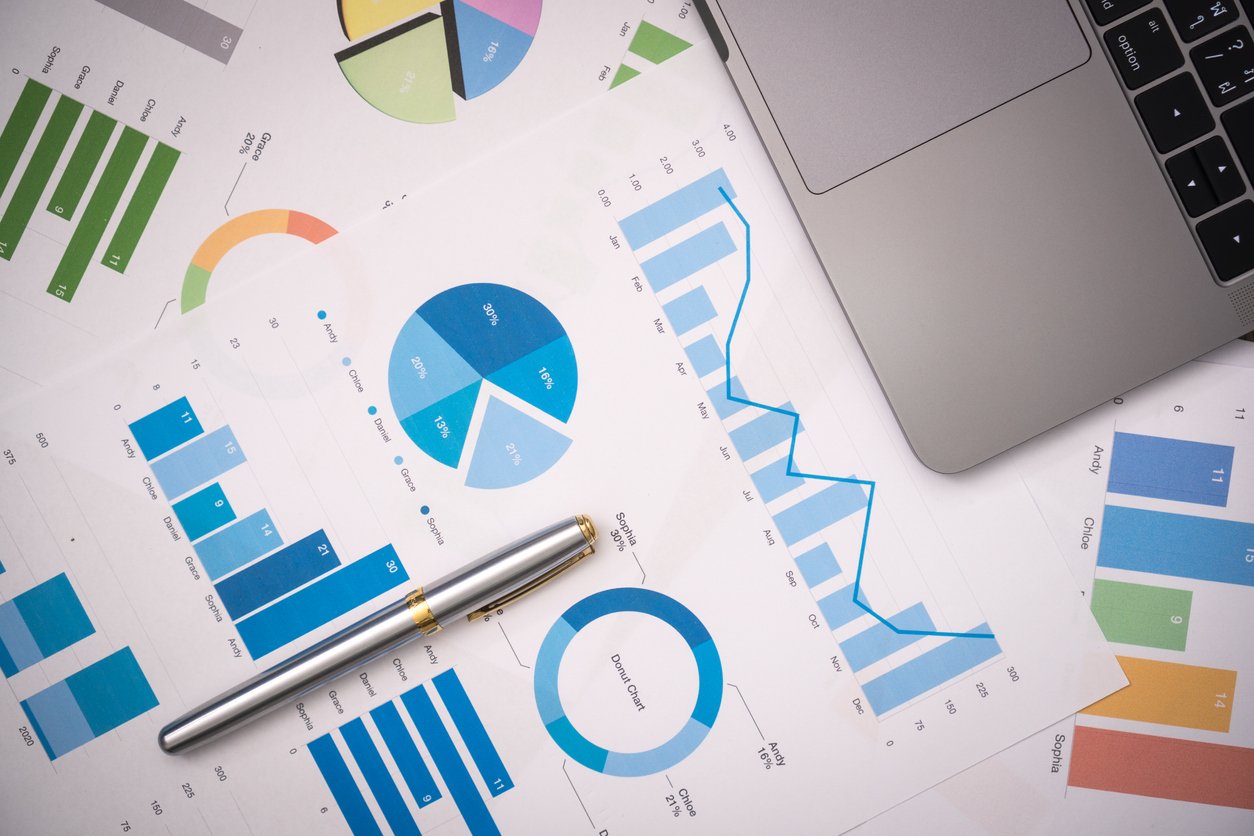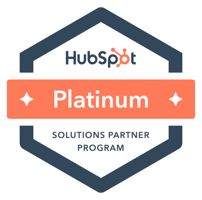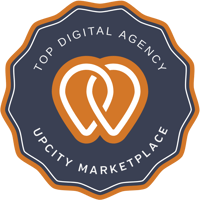This article is designed to give you a high-level, yet a comprehensive breakdown of what sales enablement is, what it involves, and why it's so important. They say that "knowledge is power" — and the more knowledge you gain around sales enablement, the easier it will be for you to unlock its power for your brand.
With that being said, let's dive in!
What is Sales Enablement?
Sales enablement is defined differently depending on whom you ask. For instance, HubSpot defines sales enablement as:
"The iterative process of providing your [business'] sales team with the resources they need to close more deals. These resources may include content, tools, knowledge, and information to effectively sell your product or service to customers."
According to Brainshark, sales enablement is:
"A strategic, cross-functional discipline designed to increase sales results and productivity by providing integrated content, training and coaching services for salespeople and front-line sales managers along the entire customer's buying journey, powered by technology."
Sales Hacker has a simpler definition than either of the companies above:
"Getting the right people in the right conversations with the right [decision] makers in the right way."
As you can see, there's quite a bit of variation when it comes to pinpointing exactly what sales enablement is. However, there are some key features that are shared (or at least implied) by almost every definition of this term:
- Sales enablement isn't just a high-tech cure for poorly-performing sales and marketing teams. Rather, it's a strategic approach to the overall sales process.
- Sales enablement encompasses more than just your sales department. For example, the marketing department is heavily involved in sales enablement more often than not.
- The basic objective of sales enablement is, as the name suggests, to enable your sales team to sell at optimal levels.
- Sales enablement is an ongoing process that must be continually reviewed and refined for the best results.
Of course, sales enablement involves the use of specific tools, software, platforms, and training initiatives to optimize the sales process. And if you are a little skeptical about how important a well-defined sales enablement program actually is, just glance over these statistics:
- 75% of companies using sales enablement tools report increased sales in the past 12 months.
- 40% of those same companies report growth of 25% or more.
- 59% of businesses that exceed their revenue goals have clearly defined sales enablement functions, versus only 30% of underperforming businesses.
Now that we've discussed what sales enablement is all about, and how it can drive tangible results, let's drill down into some of the specifics around this concept.
The Different Aspects of Sales Enablement
Since sales enablement encompasses a broad range of operations and business processes, let's break down some of the key elements of an effective sales enablement program. We'll start with:
Reporting and Analysis
Big data can be a wonderful asset — but it can also overwhelm your sales team with non-vital information. A well-designed sales enablement program can help your employees to harness the power of data without losing sight of what's relevant to the bottom line. For instance:
- Standardized reporting. Sales enablement professionals can bridge the gap between which metrics management needs to see and how sales reps compile their reports. They can also improve the way sales reps guide customers through their buyer's journey. As one example, standardized activity reports, consolidated into a centralized platform, can help one salesperson pick up where the previous one left off when a specific customer reaches out to the company.
- Lead qualification. Lead scoring systems are a big part of most sales enablement programs. After all, why pursue leads that are probably not a good fit for your business in the first place? On the other hand, a data-driven lead scoring system will assign "positive weight" to individuals and/or companies that fit the profile of an "ideal customer."
- Sales process audit. Many third-party sales enablement consultants will begin their contract with a comprehensive audit of the client's sales process. This will help pinpoint "bottlenecks" and opportunities early on, and allow the consultant and client to collaborate in a highly focused way. Of course, in-house sales enablement initiatives should also include such an audit.
Optimized Sales Content
In today's Digital Age, so much of selling revolves around the development and distribution of content — specifically, the right content, for the right consumer, at the right time. Granted, content creation is primarily identified with marketing; but that doesn't mean your sales team can get by without effective content. From testimonials to personalized emails, sales content plays a big role in closing deals.
With that in mind, here are some ways sales enablement can optimize your content:
- Organization. You could have a gigantic content library full of exceptional material — but if your sales reps don't know where to find the information, then it won't have any effect on your bottom line. One of the common functions of a sales enablement program is to consolidate and centralize all sales content in one location. Then, with a little training, it will be a breeze for your reps to find exactly what's needed to guide their lead down the sales funnel.
- Content development. Sometimes sales enablement professionals have to develop a base of sales content for the various funnel stages and customer personas targeted by the client. For instance, sales enablement may mean the creation of case studies to showcase your brand's strengths and capabilities, as well as the benefits to "lookalike" consumers that bought from or contracted with your company. Testimonials are also important since they provide "social proof" that can really move the needle. Whatever the case may be, content development may be a big part of the overall sales enablement process for your business — especially when it comes to video content.
- Template creation. Content personalization can provide a huge boost for sales reps looking to move prospects down the sales funnel. However, it would be unrealistic and counterproductive to expect your salespeople to create personalized content from scratch on a daily basis. That's where templates come into the picture. For instance, email templates give your reps a solid starting point for connecting with a lead, but also allow them some flexibility in terms of customization.
Automation
Sales enablement also involves automating routine processes for your sales reps so that they can focus on the more important aspects of their job — namely, connecting with high-value prospects and closing sales. Some common avenues of automation that a sales enablement program can tap into include:
- Email sequences. These are popular among many (if not most) companies that conduct their business online — and for good reason! Think about an email sequence that is triggered by an online purchase: the customer may receive an order confirmation email that provides peace of mind, a follow-up email that keeps the brand and related products "top-of-mind," and an additional support email that helps to enhance the overall buying experience. Automated email sequences do a lot of the "heavy lifting" after the sale has been closed — without tying up your busy sales reps.
- Automated prospecting. Some CRM platforms send out automated emails in a sales rep's name that include a direct link to their calendar. This makes it extremely convenient for the customer to schedule an appointment with the rep, even if they access the calendar outside of normal business hours. All the rep has to do is open his or her calendar to see if any meetings are scheduled for that day, and then it's off to the races!
- Live chat. Visitors to your company's website already have a level of interest in your brand or product, so it only makes sense to engage with them during their session. Sales enablement professionals may set up a live chat option to connect your sales reps with website visitors. Of course, not every visitor to your site is going to be a high-value prospect, which is why live chat automation often incorporates filtering parameters so that only high-scoring leads make it past the "firewall" and into the sights of your sales team.
As you can tell from our discussion up until now, sales enablement is not something to be taken lightly, or implemented in a haphazard fashion. It has many moving parts and requires a certain level of expertise for the best results. Nevertheless, the benefits of executing a well-rounded sales enablement program almost always outweigh the upfront costs.
The Benefits of Sales Enablement
We could talk about scores of benefits that come from sales enablement, but let's just focus on three big advantages:
1. A repeatable process for increasing revenue
By establishing a solid, yet flexible sales enablement program, you're setting your company up for increased revenue for years to come. Why? Because past successes do not predict future results. Sales reps, no matter how skilled or experienced they are, need regular, ongoing training in order to achieve peak performance. In fact, research indicates that sales reps will likely forget up to 90% of a given training program within a week!
This is where sales enablement comes into the picture. A well-established sales enablement program allows you to:
- Spot mistakes and opportunities during your periodic audits
- Adapt your training programs and course materials to your sales team's specific areas of need
- Reinforce practical skills through frequent "upskilling" and "microlearning" modules
2. A shorter sales cycle
The sales cycle is a relatively simple concept, at least in theory. The longer your sales cycle is, the fewer sales your company will make; in other words, if your reps are spending a big chunk of their time on sales-adjacent activities instead of actually selling, then it will take longer to close deals, and you won't be able to connect with as many prospects.
The converse is also true: if you can shorten the sales cycle for your reps, then your company will acquire more customers and experience a higher growth rate. By leveraging sales enablement best practices, you'll be able to do just that. For example:
- Organizing your sales content in a user-friendly library will help your reps to find those case studies, testimonials, and other materials quickly and efficiently — and then share them with the right lead to close the sale.
- Providing your reps with initial, ongoing, and "just-in-time" training will help them to perform up to expectations on each and every sales interaction.
- Leveraging standardized reporting methods will help your reps to access key information and field "hand-offs" from your marketing team so that they can seamlessly pick up where the other employee left off.
And speaking of the sales-marketing dynamic...
3. Enhanced alignment between sales and marketing
One of the biggest and most common pain points for modern companies lies in the disconnect between their sales and marketing departments. There may be disagreement over what constitutes a "marketing qualified lead" versus a "sales qualified lead," what type of content is needed to move a prospect down the funnel, and at exactly what point a lead should transition from one department to the other.
A high quality sales enablement program can make a lot of those problems vanish. For example:
- A sales enablement program may present clear guidelines on when marketing should hand a lead over to sales, and how to score a lead for quality.
- The program may also provide several avenues of communication between the two departments that will ensure a more collaborative approach. For instance, the marketing team may be invited to meetings with the sales team, and vice versa; or one employee from each team may be designated a "point of contact," and regularly share feedback and insights with his/her counterpart.
- Ultimately, the sales enablement process can help sales and marketing to move past the "blame game" and focus on the most important goal: growing the business.
Sales Enablement: Frequently Asked Questions
You may have several questions about sales enablement. For instance: What exactly is it? How does it work? What benefits can it offer my company?
In the sections below, let's answer some frequently asked questions around sales enablement.
What is Sales Enablement?
HubSpot defines sales enablement as:
"The iterative process of providing your business' sales team with the resources they need to close more deals. These resources may include content, tools, knowledge, and information to effectively sell your product or service to customers."
That's certainly an accurate definition, but let's simplify it even further. Basically, it is the process by which you help your sales team to sell smarter and faster. It includes your strategy, your tech stack, your content, and your training program for sales reps.

What are Sales Enablement Tools?
For the most part, these tools are software programs that can help your reps optimize various selling activities. Whether your reps need help prospecting, generating leads, creating email templates, or scheduling follow-up calls, an easy-to-use sales enablement tool with a range of practical features can be an invaluable resource for your team. And as your business grows, the tools in your tech stack should be able to scale with it.
What is a Sales Enablement Platform?
A sales enablement platform is a powerful type of tool that you can use to accomplish several key objectives. For example, your platform should be able to:
- Effectively align your sales and marketing departments
- Help marketers and sales reps alike understand when to "hand-off" a lead
- Onboard new sales reps with little friction and no confusion
- Promote best practices throughout your sales process
- Give your reps visibility into each and every interaction your team (or even organization) has had with the customer
- Empower your reps to provide valuable content to customers — content that matches the specific funnel stage they're currently in
Examples of popular platforms include well-known options such as HubSpot, Zendesk, Highspot, and Salesforce. Other platforms may be native to one of these key systems. However, they provide a unique set of features for their users.
What is Sales Enablement Content?
Sales enablement content is any piece of content specifically designed to help your sales team move leads down the "sales pipeline" toward conversion. You want to make sure that your reps have the content assets they need to overcome potential objections, and alleviate (or eliminate) pain points.
As an example, if your team is working with a B2B buyer that's hesitant to purchase your product due to pricing concerns, you want your reps to have ready access to content that can help overcome the buyer's objection. Such as case studies that demonstrate the value of your product, or testimonials from other customers that benefited from their partnership with your brand.
How Does it Help My Sales Team?
The simple answer is: an effective sales enablement strategy will help your sales team avoid bottlenecks in the buyer's journey. For instance, one study from Salesforce found that 58% of pipeline stalls occur because reps are unable to add value. In other words, the reps either don't know how to navigate around certain pain points, or they don't have the needed resources to do so.
An effective sales enablement plan will not only include a robust content library that reps can tap into at any time — it will also provide them with training on when and how to use the available content for maximum impact. Something as simple as asking prospects the right questions can make a huge difference in terms of results. When your reps know the right time to whip out a case study as opposed to a high-level blog post, and they know how to use that case study to address the prospect's objections, then your team will be able to guide prospects to a favorable decision more quickly.

How Does it Speed Up the Sales Process?
Think of your sales reps like a team of lumberjacks. They can do the job with regular axes, but it will go a lot faster when they have chainsaws. Sales enablement tools are those "chainsaws."
For example, a solid sales enablement strategy takes away the guesswork that many salespeople tend to engage in. In many cases, sales reps are tempted to "reinvent the wheel" for every situation. They want to change up their email template for a particular prospect, get overly creative with a social media post, or pull content from unknown sources. Bottom line? These reps spend a ton of time searching for resources or trying to create them out of thin air.
This is where sales enablement comes into the picture. With one centralized platform — and/or a suite of sales enablement tools — reps don't have to spend all that time and energy looking for help. Instead, they can easily locate helpful content from a well-organized library, use pre-designed templates for their email marketing campaigns, as well as gain increased visibility into their own performance metrics. It speeds up the entire process and helps your team improve their win rate.
How Does Sales Enablement Help Align Marketing and Sales?
A robust sales enablement strategy contributes to an open channel of communication between your marketing and sales teams. When both departments are on board, each team can receive the help they need to perform at high levels.
For instance, your sales team can provide valuable feedback to marketing as to which pieces of content are most useful in moving a prospect down the funnel. In turn, marketing can develop content marketing campaigns that will win them more leads, and drive their success. In addition, having all content organized within one centralized database helps marketing and sales to stay "on message" in their interactions with prospects.
In summary, sales enablement is an impactful, holistic approach to sales and customer retention. It can make your sales team more effective, streamline the overall sales process, and improve alignment between your sales and marketing departments. If you'd like to learn more about the many benefits of sales enablement, and how to implement it in your company, reach out to our sales enablement experts at OverGo Studio today for a free consultation.
Take advantage of our free Hubspot CRM Configuration to start modernizing your sales process. This is a limited-time offer where we will design a sales pipeline specifically for your business. Start generating more revenue and improve your close rates by building your first high-performing sales pipeline on HubSpot at no cost. Simply schedule a discovery session with our team of HubSpot experts.




